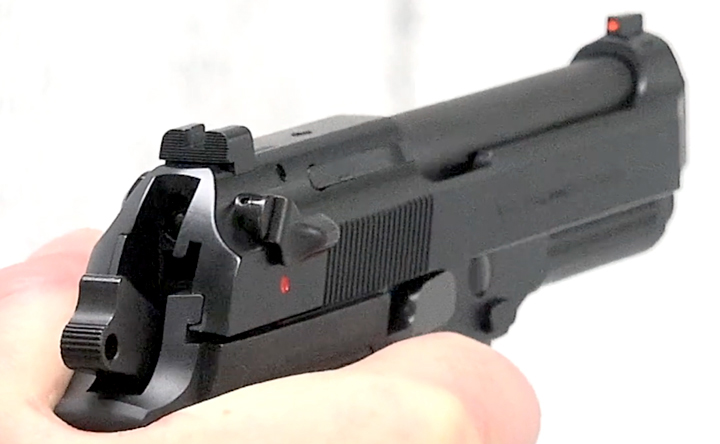Since the early 1500s, Beretta has stood at forefront of firearm design and manufacturing, setting metallurgical standards and firearm manufacturing processes for the world to follow. It wasn’t until the start of the 20th century that the Italian company would come to market with its first semi-automatic pistol, the M1915. That design laid the blueprints for an evolution of modern sidearms, some of which serve faithfully as sidearms in major military powers.
A few decades later came the company’s Model 1934, an official sidearm for the Italian military during World War II, and then the precursor to the famed Model 92 was born—the Model 1951. Heavily influenced by Walther’s P38, the M1951 functioned by way of a locking block that hinged within the barrel's underside. This short-recoil operation followed the blueprints of the company’s Model 92.
The Beretta Model 92, which saw first production in the mid 1970s, featured an open-top slide with a barrel mostly exposed, an attribute first seen with the company’s M1923 pistol. The Model 92 employed innovative features borrowed from the company’s Model 84— it featured double-stack direct-feed magazines. Beretta's Model 92 pistol went on to see myriad changes and line extensions as the years advanced.
One such variant, the Model 92X, features a drastic change to the frame design used within the 92 series of guns. The Vertec frame provides an altered grip angle that's similar to Browning’s M1911 pistol. The change in frame design allows for a more vertical configuration that translates to a pistol that points instinctively. Additionally, the Vertec frame provides a thinner and more compact profile than before that provides shooters with a shorter trigger reach and grip that is easier to assume for those with smaller hands.
To suit the needs of personal-defense aficionados, Beretta expanded its 92X line to include a Compact model with a standing height of 5.25”-tall; the Model 92X F Compact was designed to be carried concealed. With 13-round detachable box magazines, there is no shortage of protection on board. Mounted to the 92X slide, you’ll find a safety lever that acts as a decocking mechanism, too.
One of the added benefits of Beretta’s Vertec slide is that the safety may be altered to perform duties as needed—the lever can be used in a safety/decocker mode, or it can be converted to perform strictly as a decocker. Further enhancing this latest configuration, Beretta includes a set of wraparound stocks for those who enjoy the traditional M9/92 grip angle and feel. Also, the Vertex-style sights are removable and the magazine release button is reversible for further user-customization.
To learn more about the Beretta Model 92X F Compact, watch our NRA Gun of the Week video above.
Beretta 92X F Pistol Specifications
Manufacturer: Beretta USA Corp.
Parent Company: Fabbrica d'Armi Pietro Beretta S.p.A. (Italy)
Model: 92X F Compact
Chambering: 9 mm Luger
Action Type: recoil-operated, semi-automatic center-fire pistol
Barrel: 4.25”
Frame: Vertec-style
Slide: steel, Bruniton finish
Magazine: detachable box; 13-round capacity
Sights: combat-style, high-visibility orange/black
Trigger: DA/SA
Length: 7.75”
Height: 5.25”
Width: 1.5”
Weight: 27.2 ozs. empty
MSRP: $800
Further Reading:
Beretta Model 81 Cheetah: Great Value for a Casual Collector
Pistol History: The Beretta Model 92S 9 mm
Tested: Beretta’s APX Pistol
Beretta 92 .22 Long Rifle Conversion Kit
Upgrades for the Beretta 92: A Different Gun?
Tested: Beretta 92G Elite LTT Pistol
Beretta's A400s: 21st Century Shotguns




Extras:
NRA Gun of the Week: Beretta CX4 Storm Carbine
I Have This Old Gun - Beretta Model 948 Pistol
NRA Gun of the Week: Beretta 21A Bobcat
I Have This Old Gun: Beretta BM-59E
I Have This Old Gun: Beretta AR 70 Rifle
NRA Gun of the Week: Beretta 1301 Competition Shotgun
























